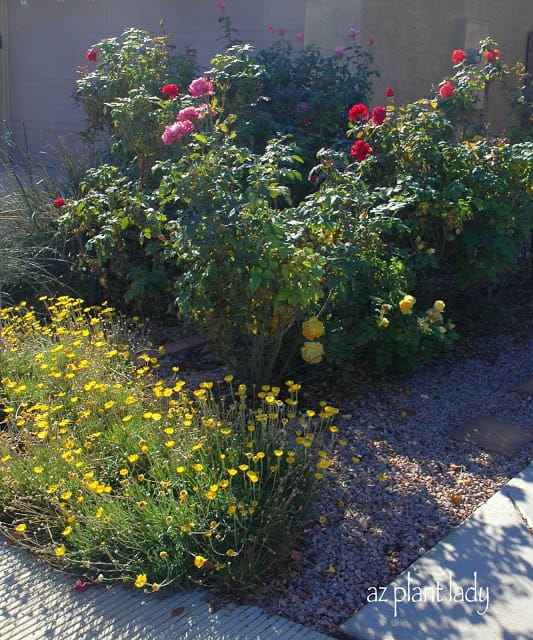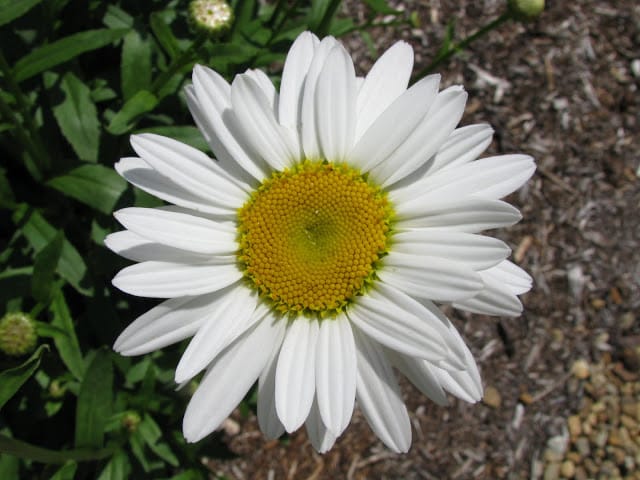Trees and Shrubs for a Neglected Area
In my last post “A Long Forgotten Area Ready for Transformation”, I told you that I would share what plants I was going to have put in this neglected area.
Criteria for Plant Selection
The selection of these plants has been guided by specific criteria:
- Personal Experience: Many of these plants have thrived in my own home garden or in landscapes I’ve overseen.
- Low Maintenance: I’ve opted for varieties that require minimal upkeep.
- Drought Resistance: These plants are well-suited to dry conditions.
- Year-round Beauty: The chosen plant palette guarantees a vibrant display of colors throughout the year, with at least one plant in bloom at any given time.
Trees for the Area
So are you ready to see what I chose?
Let’s start with the trees…
Desert Willow (Chilopsis linearis)
The area has two large Foothills Palo Verde trees along with a Wolfberry tree, so I chose one other type of tree to add.
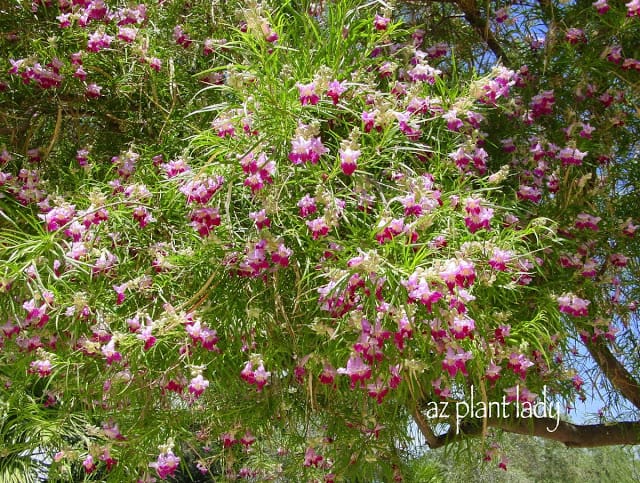
Desert Willow (Chilopsis linearis) is one of my favorite desert trees. It is not a true willow, but is named for the fact that its leaves are willow-shaped.
Colorful flowers appear throughout the summer that add a vibrant punch of color to the landscape.
Hardy to zone 6, Desert Willow requires well-drained soil and full sun or filtered shade.
Shrubs for the Area
Now for the shrubs…
Valentine Bush (Eremophila maculata ‘Valentine’)
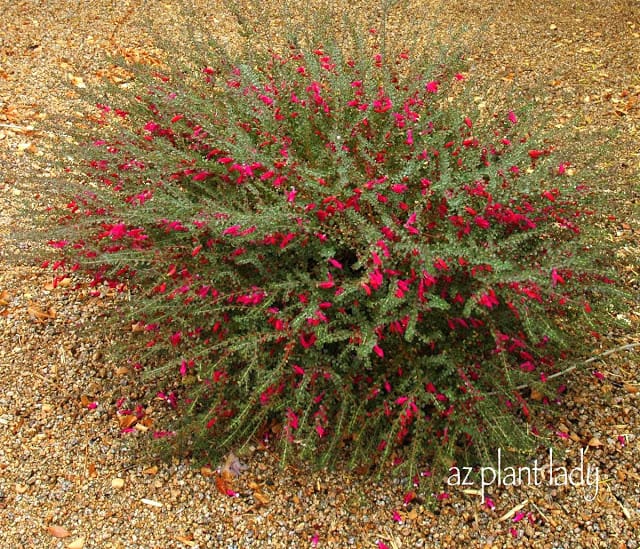
Valentine Bush (Eremophila maculata ‘Valentine’) is my favorite shrub of all time. I will never forget the day when I was first introduced to this red-flowering shrub, by Mountain States Wholesale Nursery. It was 1999 and I was a horticulturist fresh out of college.
I was given 2 Valentine shrubs from Mountain States to plant in the landscape area I managed. Ever since then, I have been hooked.
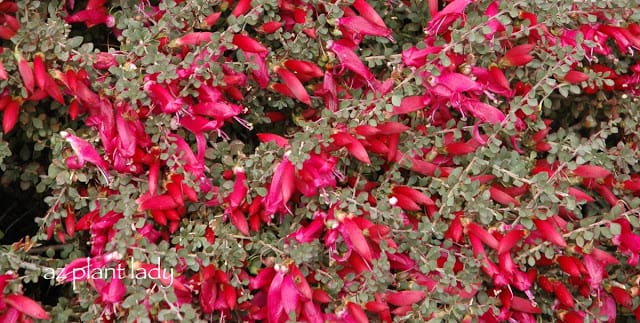
Red flowers appear on this shrub, beginning in January and lasting until April. If you haven’t noticed it before, there isn’t much blooming in winter, which is one of the reasons I love Valentine.
The foliage is evergreen and Valentine are hardy to zone 8. Better yet, they only need to be pruned once a year – in spring after flowering.
Plant in full sun and well-drained soil.
For more information about Valentine, check out my post about this great plant.
Baja Ruellia (Ruellia peninsularis)

My second choice for shrubs is Baja Ruellia (Ruellia peninsularis).
Now, this isn’t its rather invasive cousin Ruellia (Ruellia brittoniana), pictured below…
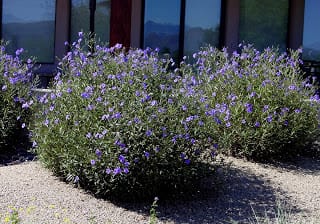
Baja Ruellia is what I like to think of as a smaller version of Texas Sage species (Leucophyllum sp). It doesn’t get as large and has a longer flowering season then Leucophyllum.
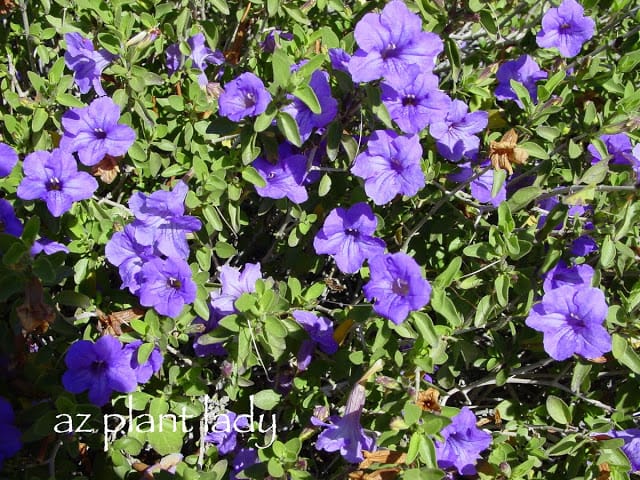
The flowers of Baja Ruellia are tubular and appear spring through fall, with the heaviest bloom occurring in spring.
The foliage is light green and rarely suffers frost damage in our zone 9b climate. Hardy to zone 9, Baja Ruellia should be planted in full sun and well-drained soil.
Silvery Cassia (Senna phyllodenia)

The third shrub for this area will be Silvery Cassia (Senna phyllodenia). This Australian native does very well in arid landscapes.
The silvery foliage will provide contrast to the darker greens present in the landscape. Evergreen to 20 degrees, this shrub flourishes in zone 9 landscapes.
Yellow flowers appear in late winter and into spring. Pruning is needed after flowering, to remove seed pods in managed landscapes.
Like the other shrubs, Silvery Cassia enjoys full sun and well-drained soil.
Autumn Sage (Salvia greggii)

The smallest shrub for this area will be Autumn Sage (Salvia greggii). This plant is hard to zone 7, so remains evergreen during winter here.
Flowers appear fall through spring in the low desert. The most common colors are red or pink, although there are other colors such as white, lavender and peach.
I like to use Autumn Sage around trees like Palo Verde, where the filtered shade shelters it from the intense summer sun. I first saw them planted around a tree at the Desert Botanical Garden and I really liked the way it looked, so I have repeated this design in many of my landscapes.
The Autumn Sage above, was planted by me around a Foothills Palo Verde about 12 years ago and they are still going strong.
I still have perennials and accent plants to show you that I have included in the design and I’ll share them with you next time.
*********************************
An Update on my Family
Life around our household has been busy lately….
School is back in session (for which I am extremely grateful for 😉
My son Kai, has ditched his wheelchair for a walker and will soon be able to walk without it.
AND
My daughter, will soon come home after leaving 5 months ago for the Navy. She is graduating from her Equipment Operator School next week and will be an official ‘SeaBee’. She will be on leave for 2 weeks before she reports for combat training in Mississippi, where she will be stationed for a month.
The BEST news is that her permanent base will be in Port Hueneme, which is where she wanted to be. What is even better for us, is that it is in Southern California, just 7 hours from home!!!
We are getting ready to celebrate her homecoming, which I will share with all of you 🙂


